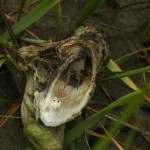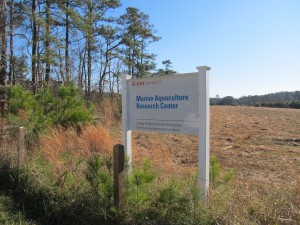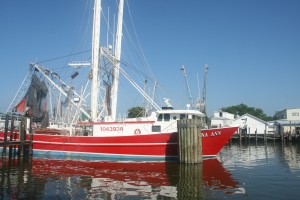
This past Friday on the banks of the Neuse in New Bern, NC, people interested in aquaculture in the region gathered to discuss the future. The group packed the ballroom in the Hilton with scientists, extension agents, interested citizens, and of course – producers. The afternoon before some attendees had the chance to visit farms in the area firsthand, one of which I’ve previously written about (White Rock Fish Farm). Friday held talks on the science, economics, and policies of aquaculture. Saturday morning wrapped up with freshwater and saltwater workshops tackling the details of growing fish. Parallel to the whole event was a trade show exhibiting the myriad food options available, water quality testing technology, cages and nets, greenhouses, and contacts for state programs. Friday night, there was proper celebration of aquaculture in the form of the Aquafood festival showcasing products from around the state. Take home message from the event? I left wanting to put a tank in my small Beaufort yard alongside the goats, chickens, and vegetable garden.
Read More “Aquaculture in NC: North Carolina Aquaculture Development Conference” »



